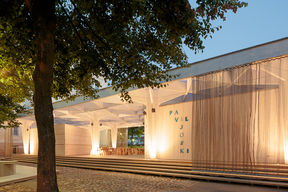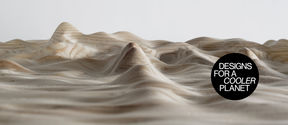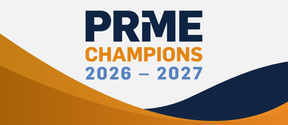Aalto is a partner in the New European Bauhaus initiative
The EU initiative imagines future ways of living by combining design, culture, social inclusion, science and technology.

Launched by the EU Commission, the New European Bauhaus initiative is developing new ways to reduce the carbon and material footprint of housing and construction and to promote well-being of human and nature. During spring 2021, the Commission will gather suggestions, views and ideas on where investment should be directed.
The aim is to create a new European way of life and attractive societies that work in harmony with nature and to bring the European Green Deal into our habitats.
As a partner of the EU's Bauhaus initiative, Aalto University organized an event on 5 May to seek change from existing scalable examples, inspiring visions for the future and the challenges that currently prevent us from acting. The aim is to bring perspectives from different fields on what kind of policies should be abandoned and how Europe can be a pioneer in planning living environments.
Key questions in the project include: Who needs to be involved in decisions concerning the built environment whose impact will last for decades or centuries? Whose voice, in turn, is in danger of not being heard? How is sustainable development taken into account? How can we build smartly so that the result also pleases our senses? What questions should we ask about the future of our planet?
According to Anna Valtonen, Professor of Strategic Design, the new European Bauhaus is a huge project - its goal is to change both our way of working and our culture on a large scale.
‘New European Bauhaus is entirely a new way of thinking and doing; rethinking of all what we are doing, across all the fields and silos. In the European context it is very radical.’
Valtonen emphasized, that the initiative calls for extensive and multidisciplinary collaboration, which is already largely done at Aalto. ‘We can truly have our say on what we see important in the future. This is a chance to get our great ideas to spread further.’
She encouraged Aalto researchers to actively influence the EU Commission and the topics it takes on its agenda. ‘They’re looking for radical ways of working and calling for multidisciplinary, radical creativity and collaboration.’
In his keynote speech, Matti Kuittinen, Adjunct professor at Aalto University, emphasized the need for change. He noted that the way we construct causes enormous harm and damage to the environment and needs to be changed in order to promote the well-being of the planet.
‘We know we have caused for example the sixth mass extinction and climate change. We also know we need to change our ways to design, construct and maintain. Not in the future, but right now. It doesn’t get any easier while we wait,’ he urges.
He calls for radical new materials for construction. Today, 50 percent of all global raw materials go into construction. And it keeps on increasing.
Kuittinen cites Ludwig Mies van der Rohe’s phrase: Less is more. ‘We could reinterpret this phrase: we need to use materials we already have, or reuse them, or use biomaterials,’ states Kuittinen.
Kuittinen brings up a big challenge; the hardest part is making the change and breaking away from our consumption habits. Kuittinen says the change requires us all to let go of certain consumption patterns, and to have mental capacities to deal with this. We should always ask how we can burden the environment and nature as little as possible, and make wise choices.
We could use art and design to ease the transition – which is not easy for any one of us – but it could help avoiding the sixth mass extinction and curving down the climate change
‘We have been trying to solve the problems with technology and engineering. but what we haven’t done yet, is to use the potential of arts, design and creativity.’
The use of design tools on a systemic level is also emphasized by Associate Professor Idil Gaziulusoy, who spoke about how sustainable transformation can be made in the post-pandemic era.
According to Gaziulusoy, the Covid19 virus has shown the vulnerabilities and structural dysfunctions built in our systems, and the problems related to injustice and inequality have become more visible and recognized. The future we invested in has shifted. We have become aware of the multiplicity of alternative futures opening up. What they have in common is that they emphasize the importance of sustainable design.
‘At the same time, political commitment to addressing climate change and sustainability issues has accelerated,’ Gaziulusoy rejoices. ‘If countries had acted ten years ago, the shift would have been much easier. Today, we have to reduce emissions much more each year, and yet we are short and far away from the target, making the 1,5 Celsius target almost impossible.’
We need new thinking, and here design tools and methods can help us solve problems better than before.
Gaziulusoy is the leader of NODUS research group at Aalto University, that is looking where design can assist in finding ways for better sustainability in the post-pandemic life. They have recognized the weak signals that might be the drivers for sustainable transformations.
Their recent research publication ‘Design for Sustainability Transformations: A Deep Leverage Points research agenda for the post-pandemic context’ offers a research agenda of 24 questions to guide sustainability transformation. Most importantly, they say, we need to focus on reforming social structures and institutions i.e. those that set the values and goals for our entire system and the mindset.
The event also included six flash talks, in which Aalto University the researchers highlighted solutions that create a more sustainable future, examples of the challenges of development projects, and visions of a desirable future.
Olli Dahl, Professor of Environmental technology
Case: Recycled fertilizer Putretti
The development project investigates the use of sewage sludge as a forest fertilizer in the Lahti region. Putretti is a mixture of local compost and ash waste with a carbon footprint of only 12 percent compared to current fertilizers. Its development is under way, with the aim of making the recycled fertilizer model available within ten years nationwide and in the EU, as the use of sewage sludge as a fertilizer has been banned for the time being.
Aija Staffans, leading researcher, built environment
Collaborative processes for better cities
The big challenge in urban planning is, how to succeed in converging and integrating the huge amount of data and knowledge, as well as interaction of people. One solution is the collaborative process on virtual environment utilizing advanced digital technology, developed at the Aalto University’s Department of Architecture. The model combines green and built environment, enabling versatile participation and interaction. Different stakeholder groups working together on virtual urban planning model emphasises empathy in interaction.
Seppo Junnila, Professor in Sustainable real estate business
Towards carbon neutrality in construction
Traditional approach to climate change is looking at the key numbers in buildings’ carbon footprint. However, climate mitigation does not equal to carbon neutrality. There is a need for a paradigm shift: the goal in construction should be in carbon neutrality. It is a necessity, and prerequisite, not a solution. The challenge is how to get there. First of all, we need to understand timing of construction better. Secondly, construction carbon spike mitigation is possible with circular economy and wooden construction. Thirdly, we urgently need innovations on new construction materials.
Tuuli Mattelmäki, Associate professor, Head of Department of Design
Furthering the sustainability agenda with creativity
Creative practices are underused in the urgent task of changing cultures towards sustainability. The transdisciplinary CreaTures project, lead by Aalto University’s Department of Design seeks to demonstrate the power of existing creative practices to move the world towards socio-ecological sustainability. It highlights how the arts can contribute to addressing climate change and associated effects. The project aims at demonstrating effective paths to achieving sustainability, social cohesion and peaceful co-existence at a time of rapid change. This will be achieved by identifying existing, often hidden transformational creative practices, by supporting new experimentation and direct audience engagement around these practices, and by evaluating their impact.
Sanna Lehtinen, Doctor, Research Fellow
Transformative Urban Aesthetics
Aesthetics is a field of research that should be used more in urban planning. Aesthetics make ecological and social values visible, experienced and valued in our everyday environments. For the new European Bauhaus, it is important to see behind current values and re-envision what we need in our urban environment. Aesthetics connects with other fields, and aesthetic style emerges in multidisciplinary collaboration. Art, design and creativity are the path to change, also in our urban environment.
Saija Hollmén, Professor of Humanitarian architecture
Cultural resilience
Aalto University’s architecture education and research foster intercultural connections, with an attempt to create an understanding on other ways to see the world, of existing and communicating. To promote sustainability and cultural awareness we need to question the normative thinking in architecture and design. Within Europe, we still have cultures that are largely unrecognized in the discourse of dominant identities. The Sámi are the only recognized indigenous people in Europe from whom we can learn a respectful connection with the nature and create a more ecological, sustainable and comprehensive relationship with our environment. The Sámi people value their living environment and make no distinction between the natural and the built environment. Nature is exploited but never overused. This year, until 2022, Sami artists are turning the Nordic pavilion in Venice Biennale into a Sami pavilion. Also, Aalto’s Interplay of Cultures studio is presenting Nordic indigenous cultures in this year’s Designs for Cooler Planet exhibition at Otaniemi campus in September.
Learn more about the event or the Bauhaus partnership:
Enni Äijälä, Specialist, partners and outreach
Aalto University
+358 50 359 4810
enni.aijala@aalto.fi

The EU initiative imagines future ways of living by combining design, culture, social inclusion, science and technology.

Aalto's main event in New European Bauhaus concentrates on radically bold questions.



